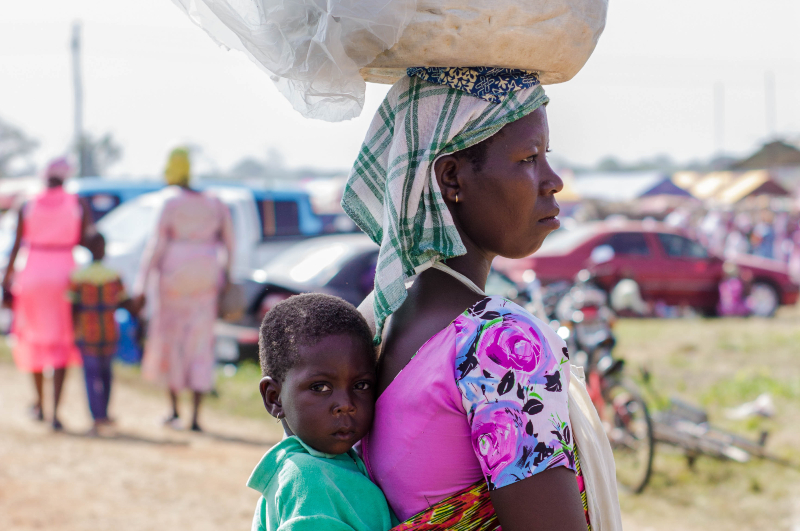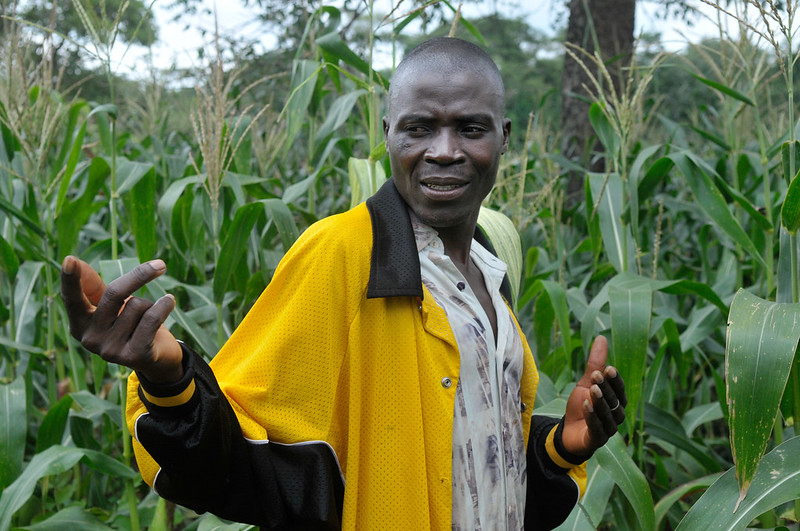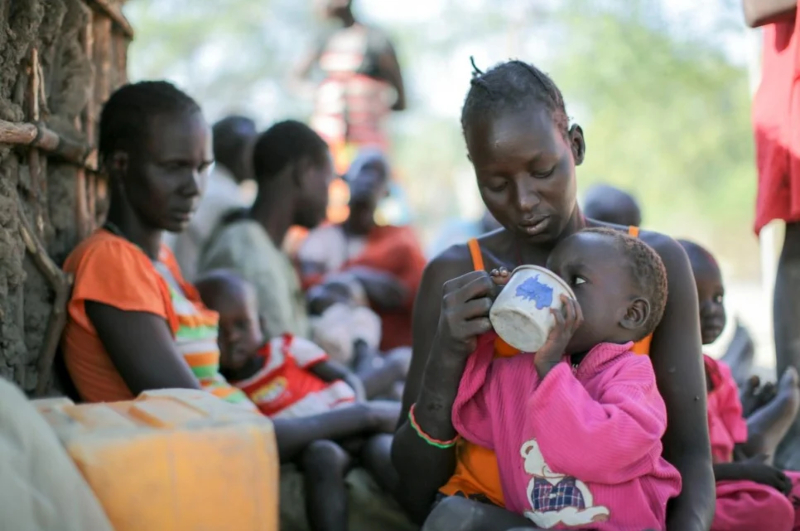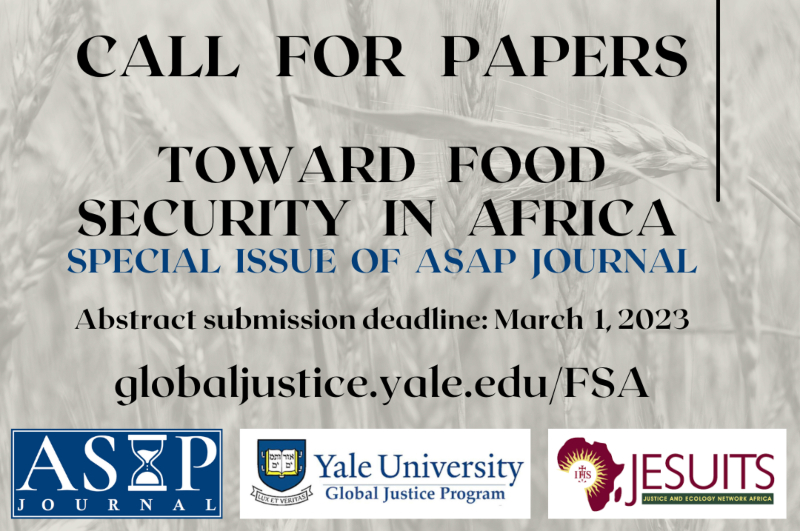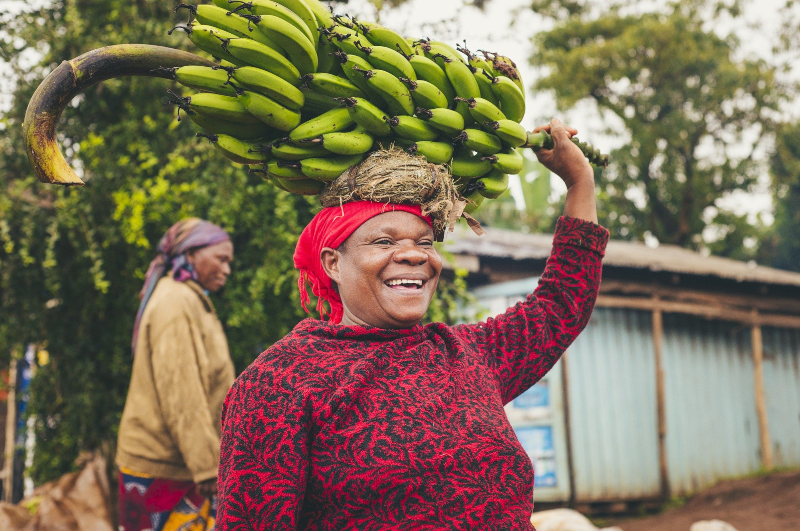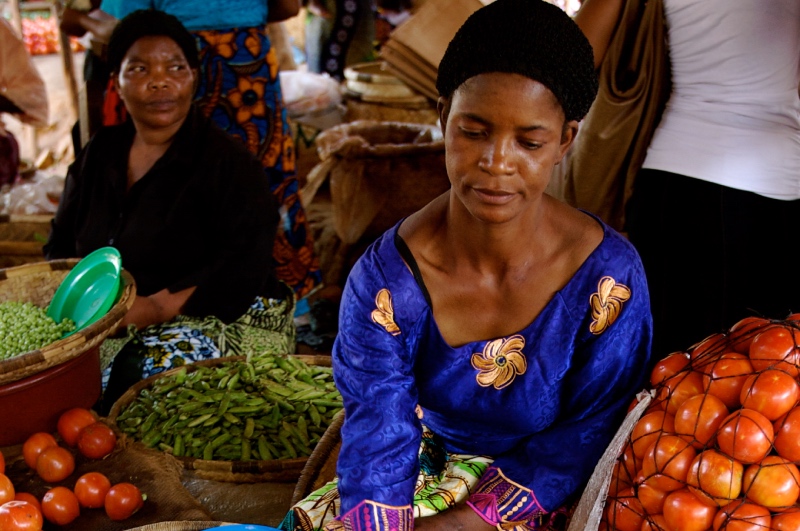

Transforming Africa’s Food Systems Towards Poverty Reduction
The present data according to FAO indicates that the number of food-insecure people has increased each year since 2014: from 500 to 800 million in Africa, and worldwide by 50% to 2.3 billion. More worrying is that the global average income is 55 international dollars per person per day. Yet 42% of humankind, 80% of Africans, cannot afford a healthy diet costing ca. 3.5 international dollars daily. How is this possible? What can we do? There is an urgent need to reform the current food system to adhere to the present realities as the world works towards transitioning into a sustainable food systems.
To respond to the above concerns the Jesuit Justice Ecology Network Africa (JENA) in collaboration with Academics Stand Against Poverty (ASAP), and Global Justice Program, Yale University organised a webinar themed, “Transforming Africa’s Food System towards Poverty Eradication”, drawing insights from a rich pool of experts across the globe. The webinar was held on December 7, 2022.
The webinar offered an excellent opportunity for academics, policy experts, agencies, stakeholders in food security, and the general public to engage and provide insights on the best direction for Africa and possible pathways for extricating Africa from food insecurity.
The webinar aimed to explore the following themes:
1. Historical perspective of poverty and pathways to progress
2. Food insecurity and its dimensions
3. Food access and stability in the SADC region
4. Food production in Africa
5. Change management for sustainable vegetable value chains
6. Agroecology as a pathway to sustainable food systems in Africa.
The themes of the webinar and points of discussion captured the reality in most parts of the African continent and other parts of the globe coming to times with the social and economic. The goal of the webinar and theme was to collate and share insights believed integral in driving the food security agenda in the face of growing development challenges likely to stem past successes and progress towards creating sustainable food systems that meets the needs of the region.
The larger picture on poverty and progress presented by Prof. Thomas Pogge-Leitner, Professor of Philosophy and International Affairs and Founding Director of the Global Justice Program at Yale University gave a detailed historical background, taking us back to the United States 1940s when then President, Roosevelt promised four freedoms across the entire world that has seen human population and global income grow exponentially. Roosevelt vision meant that such freedom could translate to economic growth for all, however, the 5-fold global income growth realised from that vision has been unequally spread. The gross world product of $161 trillion as 2022 when divided by the current world population, indicates if there was equal participation in economic growth, everyone would have all it takes for a healthy peacetime life. Thus, progress to combating poverty is far more remote despite the media portraying positive progress. Still, the illusion of positive progress is also captured by FAO in the case of undernourished persons. It came out from the presentation that this measure of undernourishment is not comprehensive and limiting since it excludes many of the nutritional metrics that should give the actual health condition. The official statistics say otherwise, the real food prices have been rising and much worse, the effects have been compounded by the Covid-19 pandemic and war in Ukraine that saw the global prevalence of food insecurity of 29% in 2021. Considering that the global income has increased 5-fold, it is surprising that 42% of the global population cannot afford a healthy diet of $ 3.5 per day. Food prices relative to other products has risen over the crises in one and half years. Rising energy prices has also led to new energy mandates that aim to increase biofuel production where a huge chunk of global food supply is being converted to biofuel production. Apart from food, so many essential services for human development such as access to health, electricity, proper sanitation, inadequate shelter, working children, lack of clean water, and illiteracy continue to deprive the poor of growth and development.
Further, he reiterated that poverty and inequality have both mathematical and political dimensions where the less the poor get translates to their abject condition and the poor are far removed from the political decision-making process. The solution to poverty and inequality should be reviewed from the genesis of the problems. Colonialism, genocide, and slavery have influenced resource distribution but also in the modern situation, the structuring of institutions at the national and international level leads to regulatory capture that accords power to a given section of the society to shape and exercise rules in favour of the ruling elites. For these ruling elites, opportunities and incentives to continue growing at the behest of others. Within this shift in rule-making, this elite group has overtaken systems that ought to provide democratic legitimisation. Examples such as intellectual property rights, natural-resource liability, no liability for externalities, weak labour standards, and global tax systems and global haven industry have become a privilege for the rule makers at the top who operate with no remorse over the impact of their actions. In a situation where private agents can call shots over public-related issues, as seen in the U.S. electoral system where private organisations and special interest groups fund political campaigns, the legislation made can only work to the favour of these special interest groups.
Food security in four its dimensions was tackled by Dr. Sophia Murphy, Executive Director, Institute of Agriculture and Trade Policy (IATP). Key in her presentation she mentioned food insecurity, its dimensions, the relationships involved and the conundrum to meeting the human right to food, and how the agricultural sector can be transformed as a source of hope for nations. She enumerated the causes of hunger over the years, giving a chronological history of food insecurity and the four pillars of food security. In looking at the four components of food security, agricultural players emphasise food supply at the heart of the efforts to achieve food security, and according to her, this emphasis fail to capture crucial aspects such as ability of households to afford food. The state’s role in ensuring food is availed to the citizens also featured considering the present crises go beyond capacity of households to withstand without government’s support. With the complexities facing the food systems, she brought to the fore how relationships impact flow of food among trading partners. Inequalities witnessed in the trade relationships among trade partners, she noted, appears to characterise much of trading in the global south who rely much on food imports. Such inequalities are also evidenced among consumers and growers of the commodities, with those lacking the bargaining and purchasing powers being much affected by the price shocks. The case of Ukraine war that affected much of global supply of wheat and oils, doubling as important sources of calories, demonstrate how over-reliance on food imports negatively affects importers who have no other alternatives.
On the concept of food as human right and agriculture as an engine of economic growth, she opines that not much has been seriously done by government and other players. It remains a challenge that countries can aim should address if they have to realise healthy and economically active populations. The 3Cs to food insecurity, including conflicts, Covid-19, climate change have deleterious impact of food security with continuing situation likely to get out of hand if not . Peace is essential for food security. Conflicts and war are disruptive of long-term food security as it leads to displacement but also the situation of the Ukraine war shows that even a war far away from can have detrimental effects by causing shocks to the, access supply and distribution of food. Covid-19 has increased indebtedness as countries in debt cannot find the currency to pay for the food, also Covid-19 affected remittances as immigrant workers could not send remittances home affecting the disposable income of the dependence. From the Covid-19, the concept of food as human right was evidenced by state efforts to revitalise social protection programs as governments in most countries put measures to respond to Covid-19. Climate change is causing hunger and death as it pushes people to forced migration, and threatened infrastructures such as floods that destroy roads and other built infrastructure. With climate change comes the call for adaptation by putting mechanisms to cushion the people from situations that may deteriorate their livelihood.
Food production in Africa was reemphasised by Dr. Jean Mboma, Dean, School of Agricultural Sciences, Loyola University, Congo. He outlined the current food production situation accounting for 60 % of jobs despite contributing to 25% of the GDP of the continent. Compared with other regions, Africa still registers low productivity in cereals which is roughly 56% of the world’s international average. The number of undernourished remains high and is projected to increase. However, food production has potential in the region for job creation and food provision. A major challenge indicated is that Africa’s food production fails to keep up with the growing population. In terms of diet, Africa still registers low levels of animal protein production that can impact the growth and development on muscle weight and general health mostly for the young. Similarly, dairy and cereals demand in the continent remains high. Africa’s Food access and stability looking at the greater SADC region and to a specific look at Zambia’s food situation was presented by Mr. Alexander Chido Msimuko, President of Academics Stand Against Poverty East and South Africa ASAP- ESA - Zambia. Using data drawn from integrated food security phase classification that gives a snippet on the food security situation in the region. Notable in the report, food insecure people are estimated to be 55.7 million from the period 1st April 2022 to 31st March 2023 with the percentage of the food insecure population ranging from 155% in Malawi to 5% in South Africa. This insecurity situation has been attributed to weather shocks causing drought and floods, and the Covid-19 pandemic. According to IPC nutrition security report, 18.6 million children under five years are stunted in the region. This figure translates to one in every three children. The figure of stunting varies across the countries, where SADC region as a whole is off-track in meeting the World Health Assembly 2025 targets. The changes leading to the food insecurity situation have been shown to emanate from shocks within the macroeconomic environment. Apart from the climate variability and weather shocks, the government budget balance, gross national savings, inflation, government debt, and country credit ratings mostly resulting from Covid-19 has affected governments’ capacity to meet emergencies resulting from food insecurity as 3 percent of the GDP was wiped off from the region during to the Covid-19 containment measures. In the case of Zambia, the pre-Covid situation such as the high level of poverty, inequality, and unemployment has exacerbated the situation.
Market and staple price performance in 2022 has been affected by the war in Ukraine that has disrupted the supply of most staples and the overall trade systems. Items such as rice and maize has significantly risen in countries such as DRC and Mozambique. For the case of maize, the impact is much felt due to the rising cost of input such as energy that is expected to affect distribution costs. Again, looking at the situation in Zambia, the IPC report estimates that maize, the country’s main staple will incur a reduction of 25.24 % change in production from the previous harvests and the period now and the coming months. In terms of economic vulnerability, the food situation negatively impacts households’ access where 72% of households spend more than 50 % of their income on food with over 10 % of the population spending over 75% of their income on food. The urban population is not exempted from this troubling situation since Lusaka province of Zambia, mostly an urban area is much affected. In response, Zambia is undertaking a social cash transfer program to cushion the people even though the growing population of vulnerability poses a threat to meeting the full potential of such programs. At a regional level, push for cash transfer programs, response mechanisms towards pests and diseases affecting crops and livestock, nutritional programs targeting under five years children, women empowerment through inclusion in decision-making, scaling safety nets, crop and dietary diversity, employment creation and instituting monitoring and evaluation frameworks for change assessment are becoming priority areas for the region in promoting people’s adaptive capacity and ability to address these challenges.
On the theme of change management for sustainable vegetable value chains presented by Dr. Nthabiseng Motete, Group Executive, Agricultural Research Council (ARC), the need for food and nutrition security was emphasised. Seeking the pathways for achieving food and nutrition security formed the core of her presentation. She echoed on the diversity in crop and production areas that can give an upper hand in pushing for nutrition security. She acknowledged the need to involve various players within the vegetable value chain due to the interlink roles that can immensely contribute to transforming our food systems. The concept of change management within the vegetable food systems enables us to frame our work within the sustainable development goals through achieving healthy food all and ending hunger, allowing sustainable use of biodiversity and natural resources, encouraging technological innovations that protect the environment, and eliminating hunger and poverty. From their own research in the vegetable food systems, the ARC vegetable food systems seek to provide sustainable solutions through activities such as the collection and characterisation of vegetable genetic resources, development of cultivation practices, water efficiency, surveys and characterisation of plant pests and diseases, awareness creation and farmer participatory research programs, efforts that have seen tremendous growth towards diversification.
Further, she echoed ARC’s approach to broadening the food basket, and diversification in diets as this helps in bringing sustainability to the core. She gave an example of okra plant, and mopane worms that have been incorporated in the diversification strategies through diversifying food choices and sources of protein. Within the agroecological systems, it becomes easy to access other non-crop protein sources such as insect protein as seen with mopane worms which is good alternative sources of protein. The need to elevate crop proteins to help communities that cannot access animal proteins. With the biofortification of crops and processing, a range of products are created. Other strategies include developing alternative markets for farmers as this help the farming community to address barriers to entry in the market. For communities who cannot access highly regulated markets, supporting along in their development are positive pointers on the avenues that ensure even smallholders are incorporated in creating sustainable food systems. Still, there are efforts to involve other value chain players and to diversify agricultural commodities such as cassava through its resilience that portrays it potential to South Africa’s food system. Key in her speech was the process of involving the community in a participatory approach that are crucial to the adoption of these new practices. Aspects such as elevating non-animal protein sources comes handy at time when weather shocks are affecting livestock production systems.
In her concluding remarks, she emphasised the need for collaboration as an avenue to share insights and solutions to the predicaments facing our food systems. She outlined that collaborations can positively impact the prospects of developing new ideas and enriching some of the practices currently on trial. Out of such collaborations, there are chances of developing seed systems that work well for local groups by equipping them with the necessary skills, technologies, seed banks, and ideas to up-scale their production. Such would also be an opportunity to dialogue on issues such use of genetically modified crops and other breeding methods in a manner that help transform and advance the interests of communities for food transformation. In her recommendations, she noted the need to relook at the research and development policies, focus on areas with the potential to transform food systems, and policies on land use. She pointed out some of the current efforts, including providing communities with vine materials for sweet potato production, helping amaranth and cassava producers to grow beyond their own consumption and also for sale. The existing gaps in policies allow room for collaboration that can in a way help resolve some of the inequalities presently being witnessed within the continent as a whole. The vegetable value chain stood out as a practical solution to addressing local problems using local solutions that local communities can easily adapt to.
To wrap up the webinar, Mr. Kevin Ouko, Research and Policy Analyst on Rethinking Africa’s Development at JENA presented on agroecology as a pathway to sustainable food systems in Africa. He introduced the concept by giving a background on the food insecurity situation that he associated with reliance on industrial agriculture. Recent development such as the Covid-19 pandemic and war in Ukraine also stood out as factors propelling food insecurity in the region. In giving a picture of the prevailing food systems in the continent, he elaborated the existing inequalities in the current food systems, mentioning climate change leading to drought and floods, changing weather patterns that affect our rain-fed food production that ends in malnutrition, food insecurity and poverty in the region. Looking at the overlapping crises, he pointed out the need to address the sustainable development goals beyond the business-as-usual approach for systemic change to be achieved. Thus, the call for sustainability, as he outlined, stemmed from the need to shift production from the green revolution model that has environmental footprints given the high global greenhouse gas emissions coming from the system. Further, the model fails to support smallholder farmers given their reliance on modern technologies and improved seed technologies unaffordable among the smallholder farmers. Agroecology, thus, becomes an option for sustainable food production as it goes beyond agricultural practices by incorporating the needs of local communities, taking to account their indigenous knowledge and ability to reconcile their agricultural practices with natural resources.
He delineated the choice of agroecology as viable pathway for building a sustainable food system since it adheres to the existing value chain within the region. Given that agroecology draws from the social, biology and agricultural sciences, it can create a people-centric system that enable the producer to protect their livelihood. And at such a time when the world is grappling with not only inadequate food production but also the impact of climate, he pointed out that agroecology offers a path for adapting to climate change and sustainable resource use that is integral to building climate-resilient food system for the continent. He delineated a historical perspective of agroecology and how it has evolved over the years, mentioning the levels of adopting agroecology at the farm and food system levels. At the farm level various agroecological practices such as crop rotation, agroforestry, reduced tillage, and use of organic fertiliser among other practices are involved. At the food systems level, he pointed out that diversifying the production systems, and encouraging participation and connectivity among farmers offer options for creating healthy and nutritious food.
In demonstrating the link between agroecology and food and nutrition security and crafting a practical approach, he first noted out that agroecology allows better use of resources and growing food, and co-creation of knowledge builds sustainable frameworks. He also mentioned previous studies looking at agroecology and food security out of which positive relationship had been indicated in the previous studies reviewed. In the transition process, he mentioned the 13 principles of agroecology that can propel our current food systems to a more sustainable system. From the first level on the input use and low environmental impacts to a global food system build on the foundation of participation, localness, and fairness, agroecology allows incremental improvements that can complete transformation to our food systems.
He concluded by mentioning some of the efforts being undertaken at JENA and how they are setting examples in encouraging agroecology within the food system even though at a small scale. Examples such as the kitchen garden by Jesuit Hakimani Centre, livelihood diversification through WASH and food processing initiative in Zimbabwe, and Agroecology advocacy in Zambia. From a regional perspective, he mentioned the recently concluded COP27 where agroecology was fronted as a viable for Africa’s climate adaptation, and the 2016 Addis Ababa Declaration that looked into the aspects of production, health and nutrition, echoing agroecology for transforming the food systems. Considering that agroecology has attracted diverse views and is contested issue, the existing barriers to adoption can be addressed through changing the political bias, changing trade rules and policies, increasing investments towards smallholders, increasing research, and improving land tenure systems to encourage smallholder and marginalised communities’ participation. Going forward, he pointed out that agroecology should be anchored in the national policies, increase research funding for agroecology, support smallholder farmers through access to credit, and build a food sovereignty framework and its supporting policies. All these efforts, summed up, he mentioned would lead to adoption efforts for agroecology within our food systems.
Related Articles
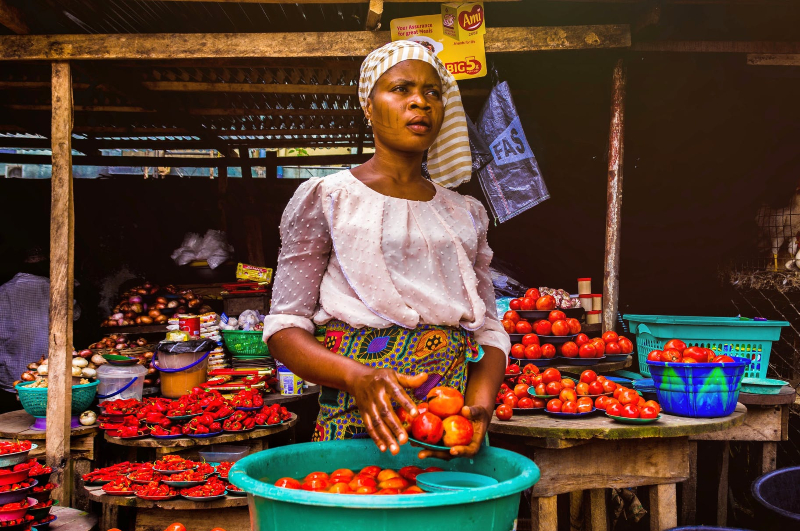
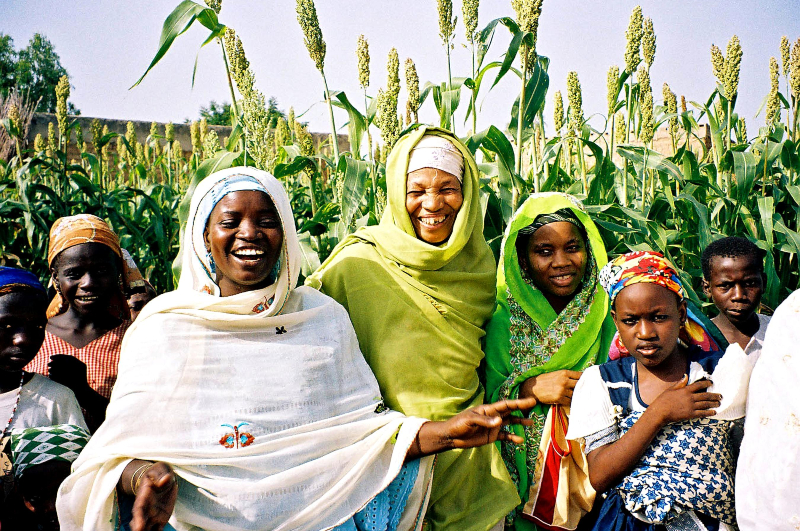
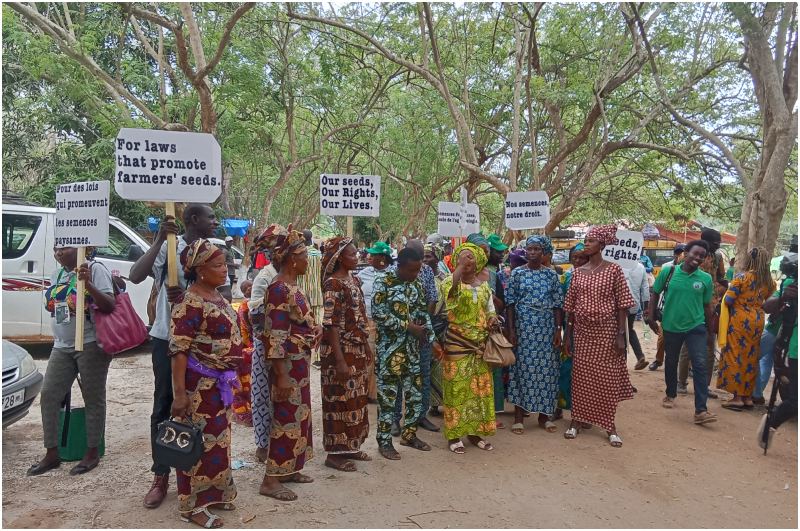
Select Payment Method
Pay by bank transfer
If you wish to make a donation by direct bank transfer please contact Fr Paul Hamill SJ treasurer@jesuits.africa. Fr Paul will get in touch with you about the best method of transfer for you and share account details with you. Donations can be one-off gifts or of any frequency; for example, you might wish to become a regular monthly donor of small amounts; that sort of reliable income can allow for very welcome forward planning in the development of the Society’s works in Africa and Madagascar.
Often it is easier to send a donation to an office within your own country and Fr Paul can advise on how that might be done. In some countries this kind of giving can also be recognised for tax relief and the necessary receipts will be issued.


